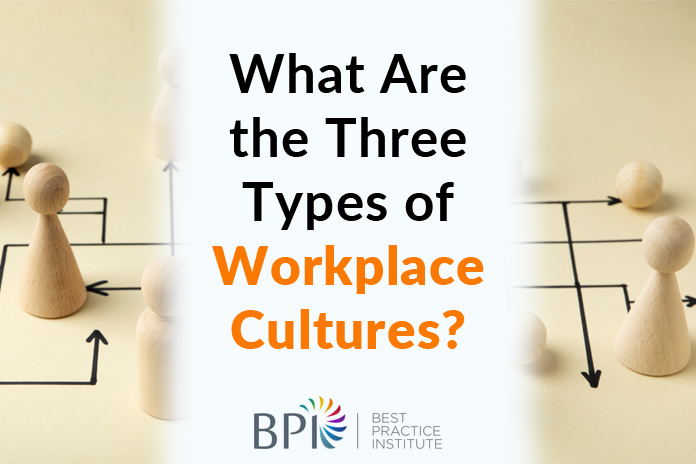Defining an atmosphere, inclination, or spirit is demanding and challenging to put a finger on an always dynamic condition. They call that an organizational culture and every organization has one.
To some extent, interest in organizational culture belongs to MBA schools, often making more of it than is necessary. Writers who should know better inaccurately quote Peter F. Drucker as saying, “Culture eats strategy for breakfast!” But Professor Drucker warned executives against changing corporate culture because it was “a big ship to turn around.” Because culture enables strategy, it presents a crucial added value.
Understanding the value for money attributable to organizational culture and improving it where needed starts with an answer to “What is organizational culture?”
Defining “organizational culture” — why it’s so hard!
Culture is hard to define because it doesn’t stand still. Sometimes, it wears a uniform, but there’s a big gap between the US Marine’s “Semper FI” and KFC’s “Finger-lickin’ good.” Still, the uniform is a tipoff. When organization members are happy with their work and proud of their products and services, they quickly dress as one.
But there’s much more to an organizational culture definition, including these five characteristics:
1. Observable: You notice the group culture through external signs. It displays the values that drive it, the common beliefs held by the most and least demonstrative members. While some values are personal and subjective, a socialized group will share some apparent commonalities.
Human and social values are less specific. Still, they determine behaviors the members have tacitly endorsed as priority, fruitful, and representative. It might appear as logo-adorned golf wear, bowling team jackets, or volunteer community work under the organization’s banner. Union workers and first responders invariably wore their spirit on their paraphernalia and outside of work camaraderie.
2. Community: Organizations have a core sense of community. It may be the community the organization’s leaders want to see or the one that develops despite them. This sense of community seems especially strong in organizations that serve the social ecosystem around them, including schools and hospitals.
It’s also true that where the organization struggles with its internal or external communities, those struggles can affect the formation of the culture. For example, if workers struggle with minimum wage in an upwardly mobile area, their frustration can dominate the culture.
3. Stability: A workplace culture is deeply ingrained in the organization. The firmly held beliefs and assumptions — accurate or fabricated — can sustain the business’s strength and continuity. However, stability can mask inertia.
Stable organizations behave consistently, and dependability builds quality into products and services. But this “virtue” may reveal a static, policy-paralyzed bureaucracy. A confident and assured structural order does not always invite or enable innovation and growth when rigid order and inflexible policy remove the group’s psychological safety net.
4. Determined: Leaders determine the organization’s culture — or not. Inspiring, motivating, and engaging leadership sets the direction and tone of the group’s culture. However, those leaders are not always at the top.
Boards of directors and executive teams should set the tone with their firmly held, consistently articulated, and personally modeled values. Organizational members will fill in the blanks that are absent at the top, often with behaviors counter to the other stakeholders’ interests.
5. Dimension: A workplace culture may be contained in the organization at one level or another. The spirit on the work floor or in the field invariably differs from that of the officers in the C-suite. It will likely change from one functional silo to another. And multi-site organizations can expect cultural mindsets to vary from location to location.
It takes strong leadership to introduce a continuum of values and behaviors that bridge or minimize these gaps. If they expect to add customer-centric value to the business’s product or service, they must discern and define the ideas, knowledge, practices, norms, and rituals in an organization. But you can only deal with or influence the external signs.
3 valued organizational structures:
Without exhausting time on failed structures, you can focus on three organizational structures serving members and customers successfully:
1. Enabling bureaucracy: A culture’s problems do not always stem from bureaucracy. Because bureaucracy brings some demonstrable order, it forms the infrastructure of any organization. Well-formed, it allows individual autonomy, engages interest, and recognizes and rewards innovation. And bureaucracy expands with growth at the risk of choking the organization.
A coercive and static bureaucracy values the obeisance and adherence of its workforce more than its curiosity and invention. It values compliance more than positive deviance, which leads to restraint and penalty. An enabling bureaucracy, however, sees workers as collaborators and contributors rather than assets or capital.
Strong leaders watch and listen. They work at creating a workplace where positive psychology is the norm. They work at building a solid safety net allowing people to speak up and give feedback. They respond with recognition, adoption, and adaption that integrates those inputs. And organization members see their future in the leaders’ vision of a positive future. There is room for aggression and competitiveness in enabling bureaucracy, but it arises from the willingness and commitment of the enabled, not from the forced and narrow oversight.
2. Creative culture: Creativity occurs where flexibility and tolerance are felt values in a positive organizational culture. Creativity is not merely self-fulfilling. Its reward comes from its connection with others and with their joint accomplishment. It is a team culture that values individual talents in so far as the members enjoy improvisation amid comparable though differentiated talents.
Aggressive play pitting offense against defense does not encourage creativity. Basketball teams and jazz quintets are better analogies. Leaders are active in the play, but they select the talent, arranged the action, and trust the whole is larger than the sum of its parts.
Creative cultures can seem undisciplined or permissive. However, the culture permits integration, enables self-respect, and builds relationships. Such organizations push their members closer to their target markets, providing an experience that increases value for money for members and customers.
3. Missing culture: In too many organizations, the senior leaders abrogate their cultural roles. They need more interest, talent, or charisma to engage and inspire. Short on strategy or tactics, low on moral drive or ethical standards, or lacking skills in communication, decision-making, and/or delegation, they leave their doors open to sycophants and push necessary voices floors below.
High-energy, assertive, and charismatic entrepreneurs too often make assumptions the organization does not support. In their personal and passionate drive to invent and innovate, they place a high value on those willing and able to take flight with them. In high-profile instances like Microsoft and Facebook, these entrepreneurs have generously rewarded the sweat equity of those who remained on board. In many more examples, those partner members become hangers-on, exhausted by the boss’s demands.
However, a culture exists even where the leadership needs to shape or nourish it. Any organization has a cellular system that quickly evolves and adapts to survive. These cells form systems with emerging voices. When leaders ignore or stifle these voices, they will find a way to the surface, usually in counter-productive ways.
3 ways to improve organizational culture!
There is no “one-size-fits-all” culture. You can’t expect the military to function collaboratively and creatively, but an enabling bureaucracy could undoubtedly improve the DMV. Apple and Nike may have creative environments at the top, but they find it necessary to ship manufacturing offshore where cultural expectations differ. Only a positive organizational culture integrates the best of cultural behaviors into the best fit-for-purpose, fit-to-use, and fit-to-context culture.
1. Employees are partners. Treating employees as persons is too big a task for Human Resources. They can administer the people records, secure compliance issues, and train and develop people. HR can facilitate culture, but accountability belongs to everyone.
If compensation is consistent, you can differentiate employees by skill set, education, and/or maturity in the function. But equity also requires you to provide better than physiological needs. Positive motivation requires support in actualizing social relationships, self-esteem, and ambition.
Employees need the security net of insurance benefits, wellness concerns, and workplace safety. But they thrive in environments ensuring their team and individual psychological safety. My research for In Great Company finds businesses flourishing where employees experience a loving connectedness with their work, co-workers, and customers.
As an organization increases its stake in the social contract, the members respond with energy, loyalty, and improved production. The nationwide Costco empire and Texas’ own H-E-B supermarket chain do it right. According to Aine Cain, writing for Business Insider, Costco employees value their “sense of security.” And, H-E-B consistently ranks among the best places to work and outperforms Walmart everywhere they compete.
2. Growth means change. The change affects everyone inside and outside the organization. But it takes leadership to value and welcome it. Employees understand change will affect their work, but only a positive culture will increase the equity proportionately.
The increased equity does not require additional compensation; a positive culture will define and communicate new work roles. For employees, transparency means value for money, something leaders must respect. Transparency offers employees respect. It creates trust. And it mutes negative voices. Consistent quality messages from the leadership inform, train, and unite perceptions. It presents new goals with the means and methods to achieve them, removing barriers and providing the necessary tools to succeed.
For instance, Uber is still growing despite its negative leadership, but it took outside intervention to set it right. Its new CEO Dara Khosrowshahi has seen its stock value tumble while he needs help to make significant positive moves to improve diversity, equity, and compensation. Despite Elon Musk’s quirky behavior, Tesla has outperformed mainly due to its constructively disruptive environment.
3. Hearing is not listening. Positive leaders hear what others are saying. They listen to the market for hints of demographic shifts, tastes, and spending. But they should listen to their employees as closely as they follow the market. Positive listening builds relationships because it acknowledges the presence and voice of the other.
Positive listening is a psychological subtlety. It brings parties closer. It increases understanding, negotiates differences, and discovers solutions. Attentive listening may not be convenient given the burdens on active organization leaders, but strong leaders work it into their standard operating procedure. They make respect and relationship-building part of their management style. Employees at Edward Jones find integrity baked into its customer-centric culture, and those working at American Express find their work meaningful.
Strong leaders convey self-confidence with room for challenges. They empower individuals and model positive team performance. They are emotionally stable and emotionally connected to those co-workers they need to achieve a framed vision. And, they draw large pictures, embrace inventive processes, and frame change as positive and transformational.
Can you do it?
You can shape, direct, and nourish an organizational culture. You might even reinvent or re-engineer a company’s culture. But it won’t be easy.
It takes definition, of course. You should understand what culture is and how it functions. You must know what it means to an organization’s performance and profit. And you must appreciate that culture starts at the top.
A positive workplace culture only has little chance when CEOs are placed because of their P&L history, seniority, or connection. They either bring the talent with them or not. And they should be qualified and interviewed in depth if you are to discern and place value on their behavioral history.
Conversely, the candidate needs to know how the organization’s culture works positively. They need to know what to retain, restore, or revise. The company and the candidate should agree on the assumptions and risks attached to change. And they must negotiate a timetable for analysis, evaluation, action planning, and implementation of a positive organizational culture is to add the value possible.










